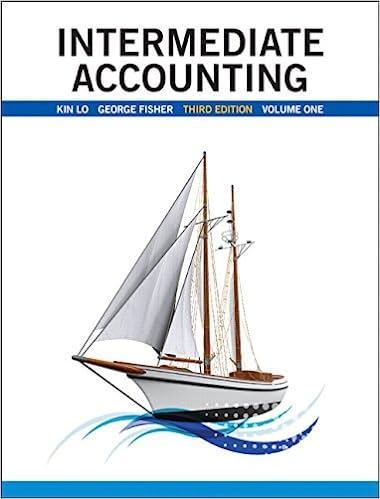Question
The controller of Stanley Yelnats Inc. asks you to make a monthly cash budget for the next three months. You are presented with the following
The controller of Stanley Yelnats Inc. asks you to make a monthly cash budget for the next three months. You are presented with the following budget information:
| Line Item Description | January | February | March |
|---|---|---|---|
| Sales | $93,000 | $114,000 | $152,000 |
| Manufacturing costs | 39,000 | 49,000 | 55,000 |
| Selling and administrative expenses | 27,000 | 31,000 | 33,000 |
| Capital expenditures | _ | _ | 36,000 |
The company expects to sell about 12% of its merchandise for cash. Of sales on account, 65% are expected to be collected in full in the month following the sale and the remainder in the following month. Depreciation, insurance, and property tax expense represent $6,000 of the estimated monthly manufacturing costs. The annual insurance premium is paid in June, and the annual property taxes are paid in October. Of the remainder of the manufacturing costs, 85% are expected to be paid in the month in which they are incurred and the balance in the following month. All selling and administrative expenses are paid in the month incurred.
Current assets as of January 1 include cash of $35,000, marketable securities of $50,000, and accounts receivable of $106,900 ($81,000 from December sales and $25,900 from November sales). Sales on account in November and December were $74,000 and $81,000, respectively. Current liabilities as of January 1 include a $47,000, 12%, 90-day note payable due March 20 and $6,000 of accounts payable incurred in December for manufacturing costs. It is expected that $2,800 in dividends will be received in January. An estimated income tax payment of $14,000 will be made in February. Stanley Yelnat's regular quarterly dividend of $6,000 is expected to be declared in February and paid in March. Management desires to maintain a minimum cash balance of $27,000.
Required:
1. Make a monthly cash budget and supporting schedules for January, February, and March. Enter an increase in the month's cash balance or an excess cash amount as a positive number. Enter a decrease in the month's cash balance or a cash deficiency as a negative number. Assume 360 days per year for interest calculations.
| Line Item Description | January | February | March |
|---|---|---|---|
| Estimated cash receipts from: | |||
| Cash sales | $Cash sales | $Cash sales | $Cash sales |
| Collections of accounts receivable | Collections of accounts receivable | Collections of accounts receivable | Collections of accounts receivable |
| Dividends | Dividends | Dividends | Dividends |
| Total cash receipts | $Total cash receipts | $Total cash receipts | $Total cash receipts |
| Estimated cash payments for: | |||
| Manufacturing costs | $Manufacturing costs | $Manufacturing costs | $Manufacturing costs |
| Selling and administrative expenses | Selling and administrative expenses | Selling and administrative expenses | Selling and administrative expenses |
| Capital expenditures | Capital expenditures | Capital expenditures | Capital expenditures |
| Other purposes: | |||
| Note payable (including interest) | Note payable (including interest) | Note payable (including interest) | Note payable (including interest) |
| Income taxes | Income taxes | Income taxes | Income taxes |
| Dividends | Dividends | Dividends | Dividends |
| Total cash payments | $Total cash payments | $Total cash payments | $Total cash payments |
| Cash increase (decrease) | $Cash increase (decrease) | $Cash increase (decrease) | $Cash increase (decrease) |
| Cash balance at beginning of month | Cash balance at beginning of month | Cash balance at beginning of month | Cash balance at beginning of month |
| Cash balance at end of month | $Cash balance at end of month | $Cash balance at end of month | $Cash balance at end of month |
| Minimum cash balance | Minimum cash balance | Minimum cash balance | Minimum cash balance |
| Excess (deficiency) | $Excess (deficiency) | $Excess (deficiency) | Excess (deficiency) |
2. The budget indicates that the minimum cash balance will not be maintained in March. This is due primarily to which of the following causes? I. Capital expenditures II. Note repayment III. Depreciation IV. Income taxes V. Decreased collection of accounts receivable Select the correct answer
I, II, III, IV, and V I and II only III, IV, and V only IV and V only
Step by Step Solution
There are 3 Steps involved in it
Step: 1

Get Instant Access with AI-Powered Solutions
See step-by-step solutions with expert insights and AI powered tools for academic success
Step: 2

Step: 3

Ace Your Homework with AI
Get the answers you need in no time with our AI-driven, step-by-step assistance
Get Started


